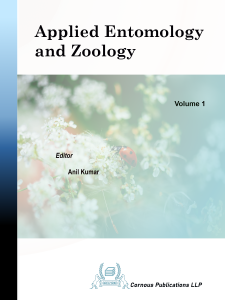Biorationals, derived from natural sources, represent a sustainable and eco-friendly alternative to conventional chemical pesticides in insect pest management. They exert their effects by modifying insect behavior, disrupting growth, or deterring feeding, rather than causing direct toxicity. Among them, semio chemicals including attractants, repellents, and antifeedants play a crucial role in Integrated Pest Management (IPM). Attractants such as food lures, oviposition cues, and poison baits exploit insect sensory systems for monitoring and control. Repellents, both botanical and synthetic, protect crops and animals by discouraging insect settlement, feeding, or oviposition through tactile, olfactory, and gustatory mechanisms. Antifeedants, primarily derived from plants like neem, act as feeding inhibitors, reducing growth, fecundity, and survival of pests while sparing beneficial organisms. These approaches offer advantages such as species specificity, compatibility with biological control, and reduced ecological risks. However, limitations like environmental dependency, short persistence, and target specificity necessitate their integration with other IPM strategies. Overall, attractants, repellents, and antifeedants provide valuable, low-risk tools for sustainable pest management and hold promise for minimizing reliance on hazardous chemical insecticides.
Biorationals, Semio chemicals, Attractants, Repellents, Antifeedants, Integrated Pest Management (IPM), Botanical pesticides
Metcalf, R. L., & Metcalf, E. R. (1992). Plant kairomones in insect ecology and control. Chapman & Hall.
Nordlund, D. A., & Lewis, W. J. (1976). Terminology of chemical releasing stimuli in intraspecific and interspecific interactions. Journal of Chemical Ecology, 2, 211–220. https://doi.org/10.1007/BF00987744
Chapman, R. F. (2013). The insects: Structure and function (5th ed.). Cambridge University Press.
Schoonhoven, L. M., van Loon, J. J. A., & Dicke, M. (2005). Insect-plant biology (2nd ed.). Oxford University Press.
Isman, M. B. (2006). Botanical insecticides, deterrents, and repellents in modern agriculture and an increasingly regulated world. Annual Review of Entomology, 51, 45–66. https://doi.org/10.1146/annurev.ento.51.110104.151146
Dethier, V. G., Browne, L. B., & Smith, C. N. (1960). The designation of chemicals in terms of the responses they elicit from insects. Journal of Economic Entomology, 53(1), 134–136.
Regnault-Roger, C., Vincent, C., & Arnason, J. T. (2012). Essential oils in insect control: Low-risk products in a high-stakes world. Springer, Dordrecht, Netherlands.
